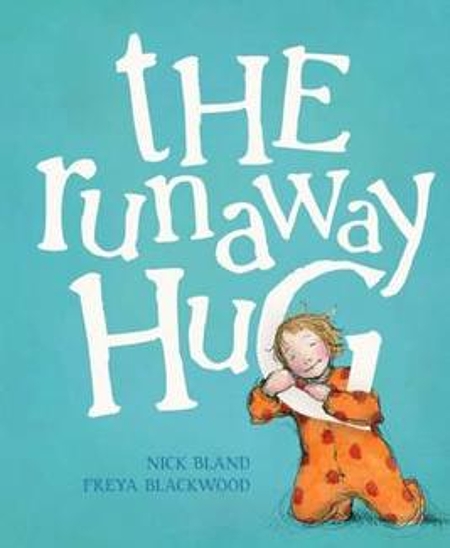Having gone months without an update on the books I’m encountering or re-encountering with my granddaughter, here’s a second in quick succession.
Nick Bland (writer) and Freya Blackwood (illustrator), The Runaway Hug (Scholastic 2011)
Lucy’s Mummy has only one hug left, so when she gives it to Lucy, Lucy promises to bring it back as soon as she’s finished with it. Then Lucy goes through her whole family giving and receiving the same hug – until Annie the dog takes it and runs out the door. Lucy is devastated.
But it’s all right: the dog returns the hug, ‘a lot more slobbery than before, but just as nice’. And there’s no limit on kisses. Freya Blackwood’s illustrations bathe Lucy’s family in glorious warmth: we know from the start that nothing can go seriously wrong.
I wouldn’t necessarily have expected a three-year-old to follow this kind of playful commodification of affection, but our three-year-old completely gets it, asks for the book frequently, and has been inventing her own variations on the ‘I’m all out of hugs’ routine.
Rosemary Wells, Morris’s Disappearing Bag (©1975, 199, Puffin 2001)
We went hunting for Rosemary Wells books, because we had enjoyed a number of them when Ruby’s father and uncle were members of the intended readership. So far we’ve had no luck with Benjamin and Tulip, in which a fairly nasty episode of bullying is resolved into a watermelon-seed-spitting friendship. But we did find this. It’s a Christmas book. Morris is a rabbit (I think), the youngest of four in his family, and on Christmas day all his siblings’ presents look more interesting than his, but none of the siblings will let him play with the presents. Then he discovers one more parcel under the tree, which turns out to be the disappearing bag of the title. First he climbs in and becomes invisible, then of their own free will all three siblings climb in, leaving him free to play with their skates, chemistry set and cosmetics for the rest of the day.
I imagine this would be enjoyed most acutely by a young person who wishes his or her older siblings would just vanish from the face of the earth for a while. But the magic of it, and the complex, gently subversive take on sharing are pretty enjoyable for anyone who’s relatively at ease with Christmas, me and Ruby included.
Rosemary Wells, You Can Do It, Noisy Nora (Viking 2020)
We bought this at a bricks and mortar bookshop (Gleebooks in Dulwich Hill) under the impression that we were buying the original Noisy Nora, one of our favourites from all those decades ago. It’s nice to see that Rosemary Wells has stayed engaged with the same family of, um, hamsters.
I remember Nora as a character who hadn’t quite come to grips with the idea of quiet inside voice as opposed to loud outside voice. This book isn’t about voices, but the suffering inflicted on a family when a young person insists on learning to play the violin – not a xylophone, a banjo, or a harp, but a screeching violin – and the joy all round when the young person succeeds. Rosemary Wells’s illustrations show the suffering with wry humour, and the flow of her rhyming narrative contrasts reassuringly with the ‘Twang! Whine ! Scrape! Squeak!’ and so on that Nora extracts from the violin.




